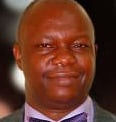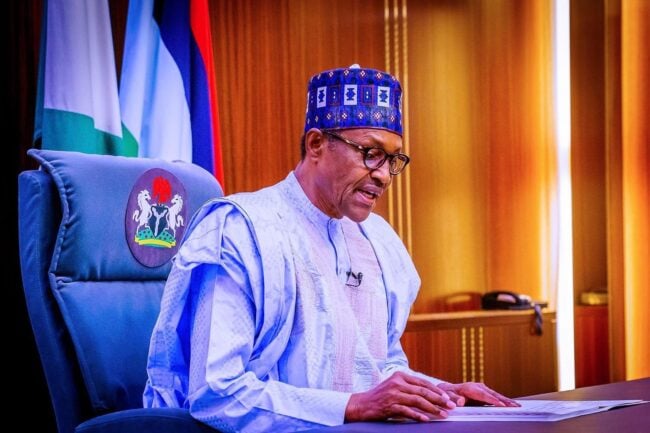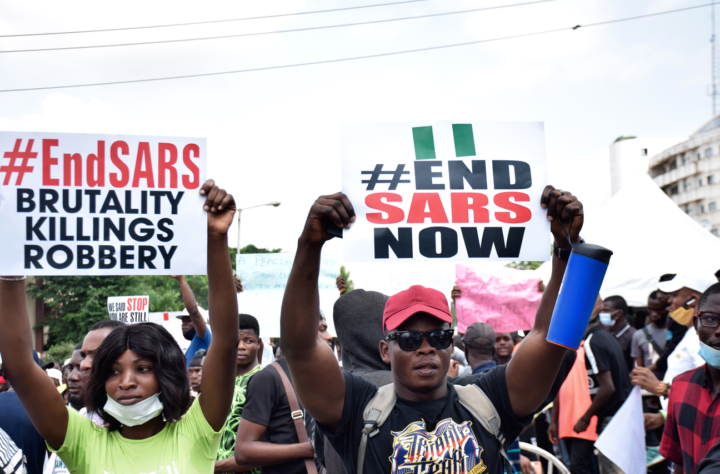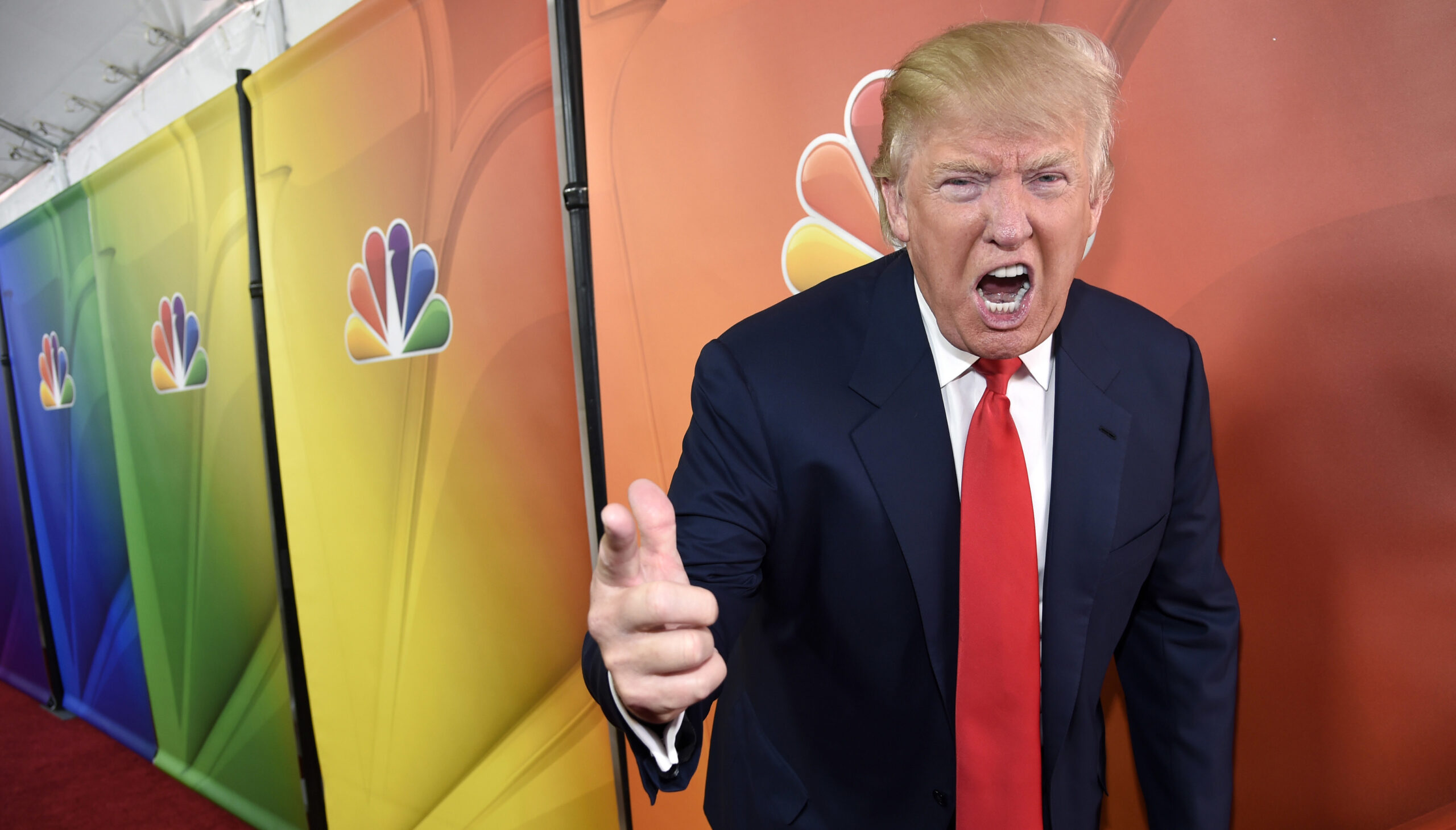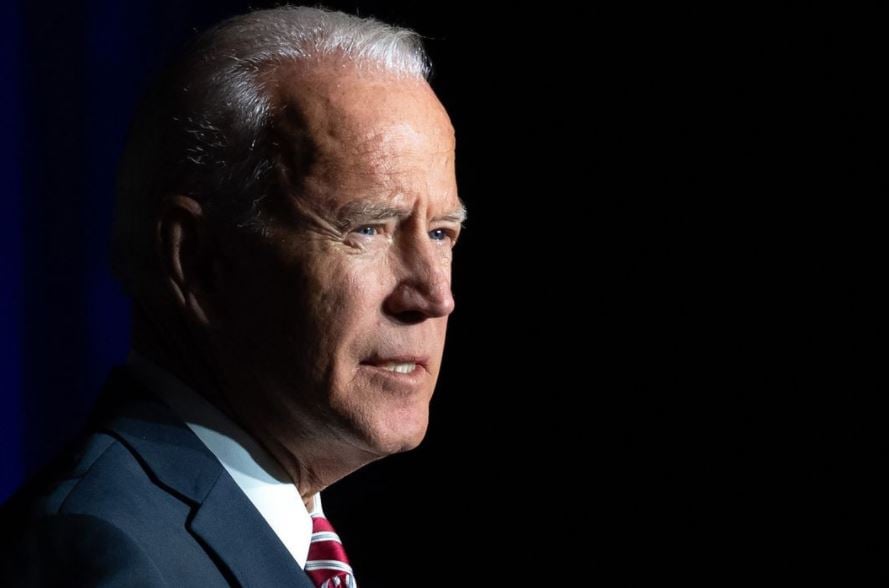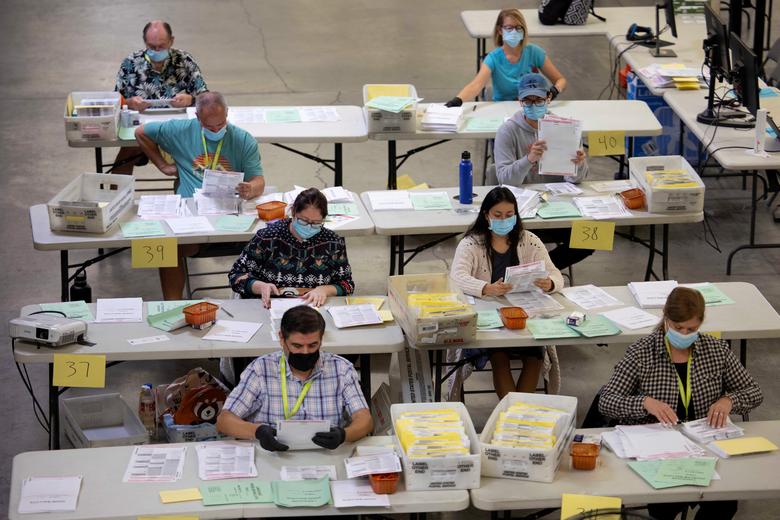The social media is a bitch. A huge bitch. If you put yourself in the shoes of the Nigerian state and its officials, the social media cannot but be a cusp of frustration and irritation. Two youth revolts in Nigeria, separated by 42 years in time, make this frustration very unbearable an experience. They reveal the spatial difference in weaponry of youth revolt and the lacerating irritancy of the social media to the rulers of Nigeria. These are rulers who tasted the merciless power of the draconian state and its ability to mow down revolt with clinical finish. They also saw the huge Mandarin power of the state to smoke out dissent. Unfortunately, these same rulers, in a 2020 Nigeria, helplessly frustrated, watch how, abetted by an unseen cyber gadget of telephone, citizens have made government almost effeminate to sting its perceived enemies.
General Olusegun Obasanjo, in his imperial castle of Dodan Barracks, must have received security reports of their gathering, with a scoffing ponder. Menacing Armoured Personnel Carriers (APCs) and starchy-clothes soldiers, whose red eyes dilated like the furnace of hell, surrounded the castle. The Nigerian Armed Forces held that renown across the continent as a powerful force capable of suppressing dissent within a twinkle of an eye. It had successfully intervened in the Congo as part of the United Nations force. Well-trained and parading tested brawns for quelling dissent, the Nigerian Army also had the ability to call for reinforcement from its cantonments. When it did this, like JP Clark’s Ibadan which was “flung and scattered among seven hills like broken china in the sun,” the ruler’s enemies would be dispersed like smoke is drifted away.
On Monday, April 17, 1978, students of all tertiary institutions in Nigeria began an indefinite boycott of lectures. They were grouped under the National Union of Nigerian Students (NUNS) and the aim of the boycott was for the Obasanjo government to be pressured to cancel increment in school fees just announced by it. Segun Okeowo, the president, and others had begun thorough mobilization, even from its Supreme headquarters at the University of Lagos. Universities in Ibadan, Kano’s Bayero, Benin, Maiduguri, Ife, Nsukka, Calabar, Jos and Ahmadu Bello University in Zaria were promptly mobilized. Their plan for the second day of the protest was to match down to Obasanjo’s Dodan Barracks gate and deliver a letter of protest on what they termed the rascality of one of his hirelings, Ahmadu Ali, to the military titular.
The students chanted the rhythmic slogan of “Ali Must Go!,” to call for the ouster of Obasanjo’s soldier-turned Federal Commissioner (Minister) of Education, Colonel (Dr) Ahmadu Ali, who, incidentally, while he was in the university, was one of the pioneering leaders of NUNS. Obasanjo, through Ali, had upped the cost of the students’ meal per day by 50k, jerking it from N1.50 to N2.00. And Lucifer relocated the seat of his government from Hell to Nigeria.
Advertisement
On the second day of the protest, which was April 18, Obasanjo, apparently fazed by the audacious impudence of the students, ordered them mowed down by fire-spitting police contingents. Obasanjo obviously hadn’t learnt from a 1971 incident on the campus of the University of Ibadan when, while protesting against worsening state and quality of their catering services and perceived dishonesty of their manageresses, the students got one of them, Kunle Adepeju, shot to death.
Obasanjo then ordered that the Akoka campus of the Lagos university be strewn up with a contingent of his menacing Rottweilers. The police, who dared anyone to match out of the university, were poised for war. The students however went out through an apiam (escape) route and gathered at the university’s adjoining communities of Iwaya, Yaba and others. The confrontation became bloody with many casualties.
As Muhammadu Buhari’s lickspittles at the National Broadcasting Commission (NBC) did with the EndSARS protest, the electronic media, controlled by government, also ensured that the news of the “massacre” of 1978 was never broadcast on any medium. It is not clear whether the broadcast hegemons of the time too wrote to tell all broadcast stations not to embarrass Obasanjo with gruesome pictures of students felled by the callous bullets of policemen. However, the story of blood spillage by Obasanjo police goons sidled out and got reported in some newspapers the second day, April 19, 1978 which was a Wednesday. Then, hell was let loose. Indeed, in virtually all the universities, there was bedlam. For example, in ABU on Thursday, April 20, a “massacre” occurred when armed soldiers forcefully entered the campus to crush the student protesters. At the end of this flaunting of naked brawns by the police, five students lay dead. At the University of Lagos, a student was shot in the leg and the Lagos University Teaching Hospital, (LUTH) as well as the orthopedic hospital Igbobi, perhaps afraid of backlash from a saber-rattling Obasanjo government, declined to treat the injured student. He bled to death. The protest lasted for one week until Obasanjo shut down all universities.
Advertisement
In attempting to deploy similar instruments of state suppression in October, 2020, same draconian weaponry and template used by Obasanjo 42 years before, to quell the Lekki grouping of protesting youths, Buhari, the Nigerian Army and Nigeria Police met a huge bulwark of frustration. The NUNS under Okeowo and the EndSARS group were similarly cross with the deplorable state of Nigeria and the hopelessness of their tomorrow wrought by Buhari and his predecessors.
Separated by over four decades, sliding situation of affairs of the youth was responsible for the two revolts. Unfortunately for Buhari, the social media has come out as one of the most unassailable weapons against tyranny of state anywhere in the world. Despotism, unaccountability and brute force are often helped to fester by non-disclosures. The social media is nevertheless repugnant to all these. It is a great ally of full and unambiguous disclosure. While the tyranny of the Obasanjo era was grossly abetted by the analogue ambience of 1978 Nigeria, a similar tyranny unleashed by Buhari, 42 years after, is repelled by the full disclosures of the cyber world.
In Lekki, if anyone was in doubt, Buhari’s beguiling cassock of a democrat was irreverently peeled off. One other attribute of the social media is its ability to shrink space and time. On your cell phone and palm top, you were a second away from Lekki, no matter where you were in the world. Indeed, the 7.8 billion citizens of the earth were in Lekki on that day. Armed with their weapon of modernity, those children of ours connected the world. As soldiers matched into the Toll Gate that night, the 7.8 billion global population was with them. As the ricochet of Buhari’s soldier recruits sounded, the world followed the menacing symphony of the bullets. Satellite images of the unconscionable bullets shot at defenceless youths were captured on the instant, even thousands of kilometers away.
Unfortunately for Buhari and his fellow travelers in their repressive boat – Nigerian Army, police and the lying apparati of state who were living in the past by deploying analogue armaments of repression – when they began to swing from outright mendacity to a gradual attempt to own up and dilute the facts, 7.8 billion citizens of the globe, entrapped in one single cyber enclosure, were laughing at their nakedness. So when Amnesty International, with access to these sophisticated satellite images, gave an amazing minute-by-minute timeline of the soldiers’ movement from Bonny Camp to Lekki and how they shed the blood of the protesting youths, Buhari and Buratai must have shouted dan iska! in astonishing frustration.
Advertisement
Like in a dramatic irony where the audience but the cast has manifest awareness of the cast’s tomfoolery and how they play the fool, Buhari’s Minister of Information, Lai Mohammed, walked into the scene. The social media had ostensibly dealt the Buhari government unmitigated blows. How can these blows be curtailed? Mohammed had an antidote: Government must dominate and control what Nigerians write on social media. “If you go to China, you cannot get Google, Facebook or Instagram but you can only use your email because they have made sure that it is regulated,” Mohammed said, even citing a situation in Ethiopia in June this year when government shut down social media for two days to stop a raging revolt.
Rising from a meeting held last Monday in Kaduna, Nigeria’s Northern Governors’ Forum (NGF) similarly called for government’s censorship of the social media. Under its chairman, Solomon Lalong, NGF said in a communiqué issued, that it took note of “the devastating effect of the uncontrolled social media in spreading fake news” and therefore, “calls for major control mechanism and censorship of the social media practice in Nigeria.” NGF could also not hide its disdain for the “subversive actions of the #EndSARS protest,” and the “superlative agitations and other change-regime actions outside the ballot box” which it said was targeted at taking “advantage of the peaceful protests to push for their separative agenda.”
For the NGF, social media must be an irritating octopus deserving of a total annihilation. The bitch has demystified the Northern elite and power brokers whose centuries of lordship over the talakawa the social media is bringing to an abrupt end. Today, in the midst of a bludgeoning crisis of the Nigerian state, the North carries a sizeable portion of that burden. For instance, in the index of projected food shortages that will hit Nigeria shortly, Nigeria’s Northern region takes a sizeable portion of this scary projection.
In May this year, the National Bureau of Statistics (NBS), while capturing poverty index, said 40 percent of Nigerians, African continent’s most populous country, lived below the poverty line of 137,430 naira ($381.75) a year. This is 82.9 million people, with the highest of that figure residing in the northwest state of Sokoto, by 87.7 percent. In September as well, the United Nation’s Food and Agriculture Organization (FAO) projected that Nigeria ranked one of the worst to be hit by global food crisis, made worse by Nigeria’s “longstanding religious and ethnic conflicts and even organized crimes by some bandits, which has greatly affected farmers working on their farmlands.” The North is the projected king of that famine. This is aside the highest number of children dropouts from school, unmitigated ignorance, poverty and lack from the north.
Advertisement
What can explain NGF’s disdain for the social media is Plato’s allegory of the café. A concept authored by Greek philosopher, Plato in his Republic, the allegory compared education and ignorance. A dialogue between Plato’s brother, Glaudon and Socrates, his mentor, described the life of ignorance lived by a people chained to the wall of a cave for centuries, facing a blank wall and who watched shadows projected to them as reality. From this wall, objects that passed in front behind them were their reality. Those shadows were later found to be the world of make-believe, as against accurate presentations of the real world.
The NGF, Lai Mohammed and Buhari must be critically disdainful of the mutation of history from the uncontrolled power of government and the weapons of dissent in its hands. Today, with the help of social media, Northern youths are like rescued prisoners from the Plato cave who are now seeing through the arrogance of power bequeathed onto the current holders of governmental power. They see their leaders’ naivety, selfishness and effeminacy and are lionized to look them in the face.
Advertisement
The truth is that, Nigeria’s governmental establishment that was used to repression, unaccountability and opaque governance cannot but be threatened by the social media. When Imo State governor, Hope Uzodinma, a few days ago, lent his voice to the narrative of calls for censorship of the social media, he was mirroring the minds of the entire corpus of that elite corps of the privileged political class. Even Prof Zulum, Borno State governor, hitherto saluted for his out-of-the-box leadership, could not but voice the frustration of the class with the fundamental right of protest. Boko Haram, he inappropriately stated, mutated from the ashes of protest.
The inability of Nigerian cruel rulers to reconcile their decades-long fangs of despotism with the social reality of the open society that is today’s social media manifests in several ways. One is the repression at the Lekki Toll gate, coordinated by the repressive organ of the army. Second is the clandestine freezing of accounts of the leaders of the protest and insertion of their names on flight bans. The last is a fascist order by the Inspector General of Police mandating policemen to kill Nigerians at scant provocation. They all indicate a ruling oligarch’s equivocation of swallowing its stinking past vomit and at the same time, wiping same vomit with the satin of modernity. How can you sanction protesting youths who coordinated the protest with the aid of a modern instrument – telephone – by using another modern instrument of ICT, which allows the Central Bank of Nigeria (CBN) to locate and freeze their accounts? While the cyber world affords Nigerian rulers the comforts of modernity, they still salivate for the cruel weapons of oppression of the past.
Advertisement
Unfortunately for Nigerian rulers, their time is up. The social media has become a Hobson’s choice for them. They cannot eat their cake and have it. It is either they conform to the dictates of an open society, which is characterized by openness, freedom of belief, freedom to protest and freedom of dissemination of information, including on the social media, which may not be palatable to them, or rot in the dark alley of atavism that repressive government is. The choice is in the hands of Buhari, Buratai, Uzodinma, Zulum and their accomplices in the political class.
Advertisement
Views expressed by contributors are strictly personal and not of TheCable.
Add a comment
